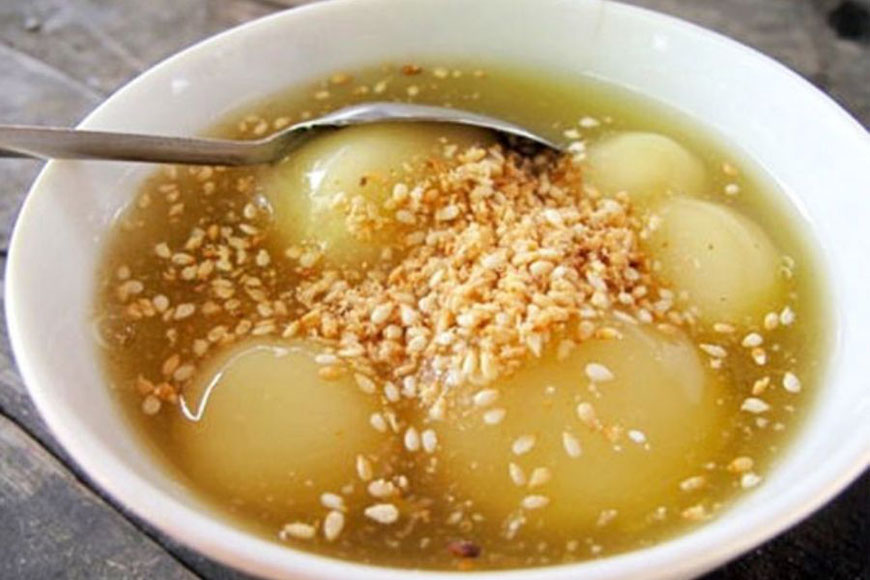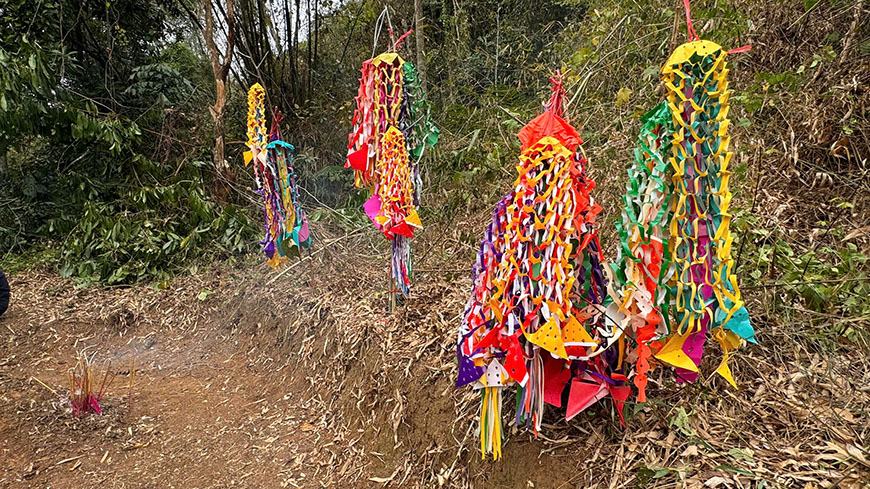In the heart of spring, as the third lunar month begins its cycle, Vietnam is preparing to celebrate Tet Han Thuc, the Cold Food Festival. This annual tradition, deeply rooted in Vietnamese culture, invites families to carefully prepare banh troi and banh chay, iconic sweets offered in homage to ancestors and shared during precious moments of conviviality. In 2025, this commemoration will take place on March 31, marking the third day of the third lunar month.
 Tet Han Thuc is rooted into Jie Zitui's legend - Internet
Tet Han Thuc is rooted into Jie Zitui's legend - Internet
At the roots of the tradition
The origins of Tet Han Thuc dive deep into Chinese history, where it is known as Hanshi Jie, literally the "Cold Food Festival."
This festival commemorates the memory of Jie Zitui, a loyal subject of Duke Wen of Jin in the 7th century BC, during the turbulent period of the Spring and Autumn era. The legend tells that during Duke Wen's exile, when famine was rampant, Jie Zitui sacrificed a part of his own flesh to feed him. Upon returning to power after nineteen years of wandering, Duke Wen generously rewarded those who had supported him but forgot his faithful Jie Zitui. Feeling neglected, Jie Zitui withdrew with his mother to the serenity of Mount Mianshan. Consumed by remorse, Duke Wen tried to make him come back by setting fire to the mountain, hoping to force him out. Tragically, Jie Zitui and his mother perished in the flames, choosing death over servitude to an ungrateful lord. As a sign of eternal mourning, Duke Wen decreed that for three days, no fire would be lit, and only pre-prepared and consumed cold dishes would be allowed.
Thus, the tradition of cold food during this period was born.
Vietnamese traditions and rituals
Banh Troi and Banh Chay
Although its origin lies in China, the Vietnamese Cold Food Festival has developed its own specificities, tinted with a unique cultural identity. Every year, on the third day of the third lunar month, Vietnamese people consume cold foods as a sign of respect and in remembrance of ancestral teachings. Unlike the Chinese tradition, the prohibition of fire is not observed in Vietnam, where daily cooking continues as normal. The uniqueness lies in the creation of two iconic sweets: banh troi and banh chay, symbolically embodying "cold food."

Banh Troi, the flavour of Tet Han Thuc - Internet
The Vietnamese cold food festival holds deep significance: a return to origins (symbolized by the date of the 3rd lunar month 3/3), the commemoration of the merits of the deceased, and a vibrant tribute to national culture.
For example, the custom of offering banh troi (rice balls) to the heroines Hai Ba Trung on March 6 in ancient Ha Tay (now part of Hanoi) attests to this. Similarly, on the anniversary of the death of King Hung on March 10, Vietnamese people from all over the country visit the Hung Temple in Phu Tho to honor their founding ancestors by burning incense and offering trays of banh troi and banh chay, thus perpetuating the memory of the nation's origins.
Prepared from scented glutinous rice flour, banh troi is presented as small white spheres containing a core of brown sugar, delicately cooked in boiling water. When they float to the surface, they are removed, barely cooked. Banh chay, on the other hand, takes the form of flat, round balls, without filling, arranged on a small plate and drizzled with ginger-flavored sweet water thickened with tapioca flour at the time of consumption.
The oral tradition tells that banh troi and banh chay have existed since the time of the Hung kings, and their preparation recalls the myth of the "bag of a hundred eggs" of Au Co. The hundred small cakes would thus symbolize the hundred eggs of Lac Long Quan: banh troi representing the fifty eggs that gave birth to the fifty children who followed their mother into the forest, and banh chay the fifty eggs of the children who accompanied their father to the sea.
These traditions are so deeply rooted in the Vietnamese collective unconscious that every Tet Han Thuc, families eagerly await the moment to prepare these delights together.

Banh Chay, with Banh Troi, will be laid on the altar of ancestors - Internet
Cleaning of graves
Although less central than other festivals like
Tet Thanh Minh (celebrated around April 4-6, marking the beginning of the solar period Thanh Minh, one of the 24 solar quarters of the year), this day still sees some families visit the graves of their ancestors to honor and clean them. This is particularly the case within the
Tay community, for whom ancestor worship is a cornerstone of their culture and traditions. Their worldview is intrinsically linked to the belief that the spirits of ancestors continue to influence their existence, and that it is crucial to maintain a respectful relationship with them through offerings, prayers, and ceremonies.
 Perpetuate the loyalty to the memory of the ancestors - Tay people from Ba Be - Mr Linh's Adventures
Perpetuate the loyalty to the memory of the ancestors - Tay people from Ba Be - Mr Linh's AdventuresThe spiritual approach of the Tay people
For the Tay ethnic group, the approach to Tet Han Thuc seems to go beyond the simple tradition of cold dishes. Their celebration takes on a more spiritual dimension, fitting into a broader framework of ancestor veneration and remembrance of departed loved ones. Thus, while Tet Han Thuc is traditionally a time to honor ancestors through a specific culinary custom, the Tay seem to relate it to Tet Thanh Minh, demonstrating their filial piety by taking care of the resting places of their ancestors and loved ones.
Today, the original significance of commemorating Jie Zitui has somewhat faded in Vietnam. Tet Han Thuc is now seen as a privileged opportunity to remember ancestors and perpetuate a unique culinary tradition. It is also a time for family gathering, where the preparation and enjoyment of these traditional dishes create unforgetable moments.
 Preparing the ritual - Ba Be Tay Community - Mr Linh's Adventures
Preparing the ritual - Ba Be Tay Community - Mr Linh's AdventuresA living cultural heritage
Tet Han Thuc, although rooted in a Chinese legend, has transformed in Vietnam into a unique celebration, where the memory of ancestors intertwines with the perpetuation of specific culinary traditions, notably the preparation and enjoyment of the iconic banh troi and banh chay. While the main aspects of this festival are common throughout the country, each ethnic group, like the Tay, brings its own nuances and specificities through its rituals and offerings.